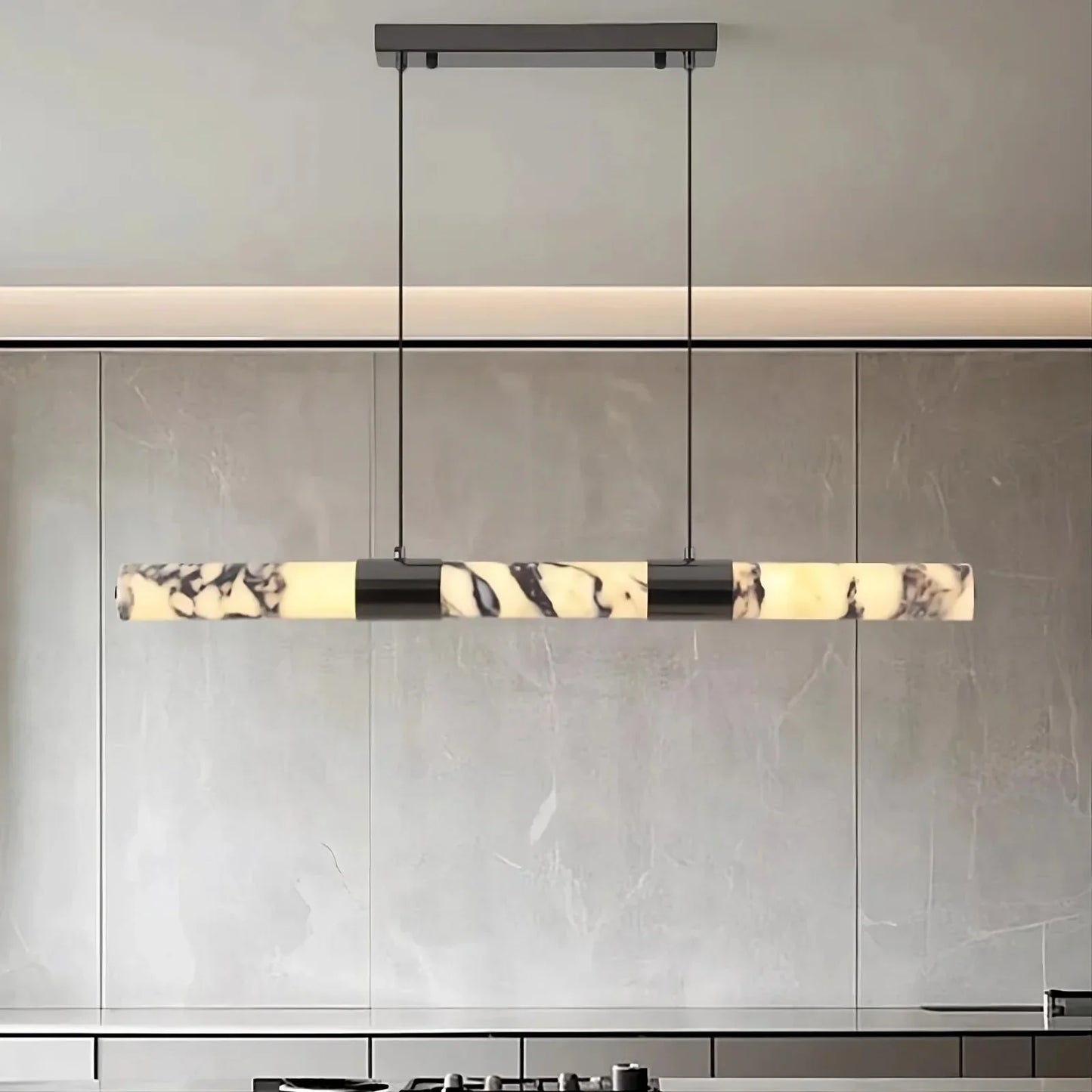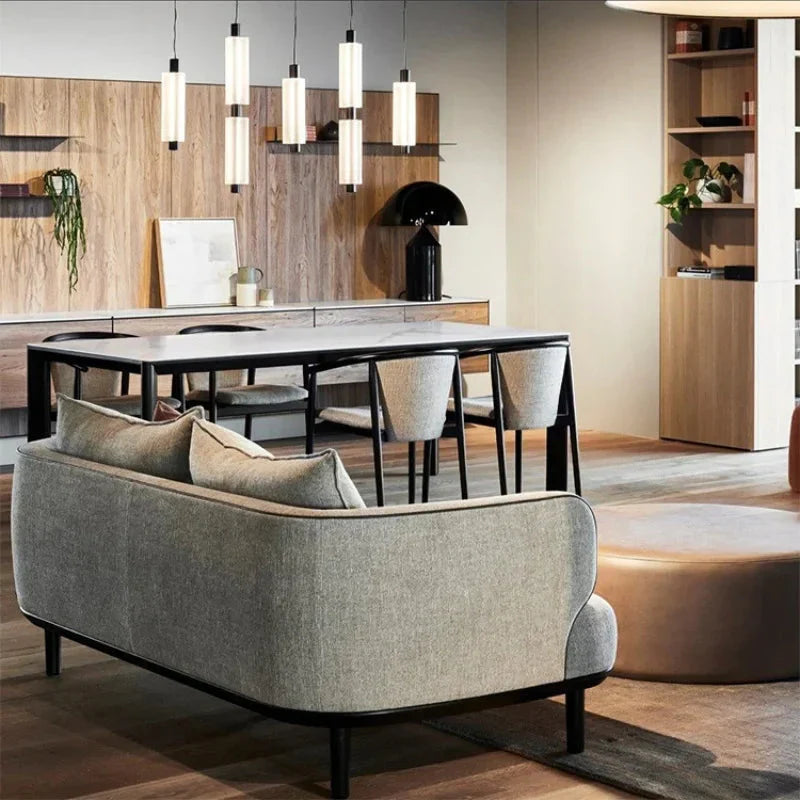
When it comes to kitchen design, lighting plays a crucial role in setting the right ambiance, improving functionality, and adding style. However, getting the lighting right in the kitchen isn't as straightforward as installing a few bulbs. Poor choices can turn your dream kitchen into a dim, impractical, or overly bright space. Kitchen lighting involves much more than just hanging a ceiling fixture. It’s about combining different types of lighting to create an inviting and functional atmosphere.
In this post, we'll explore common mistakes people make with kitchen lighting and how to avoid them. Whether you’re looking at chandeliers, pendant lighting, ceiling light fixtures, or even wall sconces, making the right choices can transform your kitchen space.
Not Layering Your Lighting
One of the biggest mistakes in kitchen lighting is relying on a single source of light. Most people assume that one overhead light fixture is enough to illuminate the entire room. This is rarely the case. Layered lighting is essential in a kitchen because different tasks require varying levels of illumination. You’ll need ambient lighting for general use, task lighting for specific areas like the countertops or stove, and accent lighting to highlight specific features.
To avoid this pitfall, consider installing ceiling light fixtures for overall lighting, paired with pendant lighting over islands or workspaces. Wall sconces can also add an extra layer of light near cabinets or as accent lights. Layering your lights ensures every part of your kitchen is brightened effectively without creating unappealing shadows.
Choosing Style Over Function
While a beautiful chandelier or trendy modern chandeliers can act as the centerpiece of your kitchen, prioritizing style over functionality is a common error. Stylish lighting fixtures are eye-catching, but if they don’t provide adequate light, your kitchen won’t serve its practical purpose.
Functionality should always come first in the kitchen. For example, a kitchen island light fixture should offer sufficient light to illuminate your cooking or prep area. You can still find plenty of stylish options that don’t compromise functionality. Consider modern chandeliers or sleek ceiling lights that balance both form and function.
Ignoring Task Lighting
Another frequent misstep is ignoring the importance of task lighting. The kitchen is one of the most active rooms in the house, with various tasks such as cutting, cooking, and cleaning happening daily. Without proper task lighting, these activities become harder and less safe.
For example, pendant lighting over a kitchen island or under-cabinet lighting can provide the focused illumination you need to complete tasks with ease. Dining room chandeliers or general ceiling lights may not suffice when it comes to prepping and cooking meals. Always consider the tasks you'll be performing in different areas of your kitchen, and ensure the lighting is tailored to support those activities.

Poor Placement of Lighting Fixtures
Lighting placement is another area where homeowners often make mistakes. Installing a fixture in the wrong spot can leave parts of your kitchen dim or overly bright. For instance, positioning a ceiling light fixture directly over your work area may cause shadows, making it difficult to see what you’re doing.
The right placement is key. For pendant lighting over a kitchen island, make sure it's hung at the correct height—typically about 30-36 inches above the surface. In areas where task lighting is necessary, such as countertops or stovetops, install fixtures that provide direct, unobstructed light. Wall sconces are perfect for adding warmth and soft light, but ensure they’re positioned where they can enhance, not hinder, the overall lighting scheme.
Overlooking Dimmers
One of the most overlooked aspects of kitchen lighting is the absence of dimmers. Many people install ceiling light fixtures or kitchen ceiling lights without considering the flexibility of dimmable lighting. Kitchens need different lighting levels throughout the day—from bright in the morning to softer lighting during evening meals.
By installing dimmer switches, you gain control over the intensity of your lights. Chandeliers or kitchen island light fixtures can become more versatile with dimming options, allowing you to create the perfect ambiance for any occasion. Adding dimmers to your kitchen ceiling lights or modern chandeliers will enhance the overall functionality and mood of your kitchen space.
Neglecting Energy Efficiency
In the modern age, energy efficiency should be top of mind when designing your kitchen lighting. Many people still opt for traditional incandescent bulbs, which are less energy-efficient and have a shorter lifespan. With so many LED options available, there’s no excuse to overlook energy efficiency in your lighting plan.
LEDs provide long-lasting, energy-efficient lighting and are available in various styles to suit your design needs. Whether you’re installing kitchen ceiling lights, pendant lighting, or wall sconces, always choose energy-efficient bulbs. Not only will this reduce your energy bills, but it’s also better for the environment.
Going Too Bright or Too Dim
Lighting that is too bright can create a sterile, uncomfortable environment, while lighting that is too dim can make the space feel cramped and gloomy. It’s essential to strike a balance between the two.
When selecting kitchen ceiling lights or pendant lighting, pay attention to the lumens (brightness) of the bulbs. For general ambient lighting, opt for softer bulbs, while task areas should have brighter lighting. Dining room chandeliers can feature dimmable options to help you adjust the light according to the mood and time of day. The key is ensuring every area of the kitchen is lit appropriately, without overpowering the space.
Forgetting About Color Temperature
Color temperature is another aspect that homeowners often neglect when selecting their kitchen lighting. Choosing the wrong temperature can affect the mood and appearance of the space. Lighting that is too cool (blue-toned) can make your kitchen feel cold and uninviting, while lighting that is too warm (yellow-toned) can reduce visibility.
A balanced color temperature around 3000K to 4000K is ideal for kitchens, providing a neutral light that complements both cool and warm colors. Whether you’re installing chandeliers or wall sconces, ensure the color temperature aligns with the design and function of the kitchen.
Not Coordinating the Lighting Design with the Kitchen Layout
It’s crucial to plan your kitchen lighting in harmony with the kitchen layout. Without proper planning, you may find certain areas poorly lit, while others are overly bright.
Before installing ceiling lights, pendant lighting, or chandeliers, take time to consider your kitchen’s workflow. Where are the main work areas? Do you have a central island that requires special lighting? The lighting design should complement the layout and ensure there’s enough light for every task. Wall sconces can also be strategically placed to illuminate areas that need extra attention, such as near cabinets or in dining nooks.

Skipping Accent Lighting
Lastly, skipping accent lighting is a missed opportunity to add depth and personality to your kitchen. Accent lighting, such as wall sconces or cabinet lighting, can bring warmth and dimension to your space, highlighting the best features.
While ceiling light fixtures or kitchen island light fixtures are essential, accent lights help add the finishing touch. For example, placing soft accent lights behind glass cabinets or along the baseboards can make your kitchen feel more inviting and refined. Don’t neglect this final layer of lighting when designing your dream kitchen.
FAQs
What type of lighting is best for kitchen islands?
Pendant lighting is ideal for kitchen islands because it provides focused light over the workspace. Ensure the fixtures are hung at an appropriate height for the best functionality.
Are chandeliers suitable for kitchens?
Yes, chandeliers can add elegance and style to a kitchen, especially over dining areas or islands. However, balance their aesthetic appeal with functional lighting sources like kitchen ceiling lights.
How do I avoid harsh lighting in my kitchen?
To avoid harsh lighting, use dimmable ceiling light fixtures and layer the lighting with softer accent lights like wall sconces. Avoid overly bright bulbs in general areas.
Can modern chandeliers work in a small kitchen?
Yes, modern chandeliers can work in small kitchens if scaled appropriately. Opt for smaller, minimalist designs to avoid overwhelming the space.
What’s the best lighting for food prep areas?
Task lighting like under-cabinet lighting or bright pendant lighting over countertops works best for food prep areas. These provide focused, direct light without creating shadows.
What color temperature is best for kitchen lighting?
A color temperature between 3000K and 4000K provides a neutral, balanced light that works well in most kitchens, creating a welcoming yet functional atmosphere.
Conclusion
Achieving the perfect kitchen lighting is all about balance and thoughtful design. By avoiding common mistakes such as poor placement, inadequate task lighting, or choosing style over function, you can create a space that’s not only beautiful but also highly functional. From chandeliers and ceiling lights to wall sconces and pendant lighting, each type of lighting has its place in crafting the ideal kitchen atmosphere. Remember to layer your lights, use dimmers for flexibility, and coordinate your lighting plan with your kitchen’s layout for the best results.




